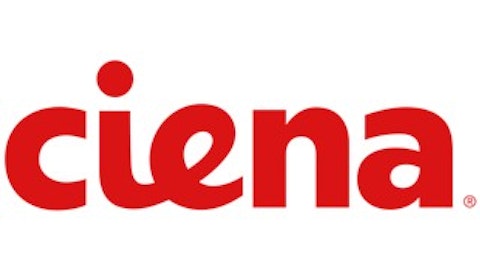However, the stock, which now trades at 112 times forward earnings, couldn’t escape fundamental gravity forever. For its third quarter, the company reported a net loss of $0.10 per share, or $7.3 million, on revenue of $101.3 million – missing analyst estimates on both top and bottom- line growth. Although revenue rose 54% year-on-year, sales and marketing expenses climbed 5.1% and now account for 51.1% of the company’s total revenue. In other words, Palo Alto Networks Inc (NYSE:PANW) spent too heavily to expand its customer base.
To make matters worse, the company issued a warning for its third quarter, stating that revenue would come in lower than the $113.7 million that analysts were expecting. It stated that weakness in Europe and spending cuts in the U.S. government would exacerbate its losses in the near term. Europe accounts for 20-25% of the company’s top line, while the U.S. government comprises 10%.
Although Palo Alto Networks Inc (NYSE:PANW) might have some solid growth potential in the future by capitalizing on the growing need for network security in both the public and private sectors, the stock’s feverish fundamentals indicate that it will probably cool down considerably.
Ciena Corporation (NASDAQ:CIEN)
Last but not least, network equipment maker Ciena Corporation (NASDAQ:CIEN) proves that sometimes less is more in the industry. The Hanover, Maryland-based company recently reported a second quarter loss of $0.27 per share, or $27.1 million, a slight improvement from the loss of $0.28 per share, or $27.8 million, it reported in the prior year quarter. Adjusted earnings dropped year-on-year from $0.04 to $0.02. Revenue rose 6.3% to $507.7 million.
While Ciena Corporation (NASDAQ:CIEN)’s top and bottom-line growth seem fairly meager, shares surged 17% on June 6. What happened?
Improved sales of Ciena Corporation (NASDAQ:CIEN)’s optical network switches and broadband access products, which drive Internet traffic around the world, was the primary reason. As a result, product sales rose 7.2% to $413.2 million, while services revenue climbed 1.7% to $94.5 million. Ciena also reported increased purchases from Tier 1 U.S. telecom companies, such as AT&T Inc. (NYSE:T) and Verizon Communications Inc. (NYSE:VZ), which are currently expanding their 4G services. Therefore, optical network products, which can transport data faster than traditional networking equipment from rivals such as Cisco, should remain in high demand.
The rising adoption of mobile devices and the growing demand for cloud-based computing are expected to fuel long-term demand for higher-speed 100G connections to increase nationwide machine-to-machine connections. Market research firm Frost & Sullivan estimates that the global 100G market will rise from $892 million in 2012 to $4.8 billion by 2016.
Wells Fargo analyst Jess Hubert forecast that Ciena’s sales volume and margins could further improve over the next few quarters, since its higher-margin converged packet optical and carrier Ethernet solutions, currently in the trial phase, could soon be released commercially.
The Foolish bottom line
A lesson we can learn from a comparison of these three companies is simple – networking companies need to realign their businesses rapidly to address the shifting demands of the market.






